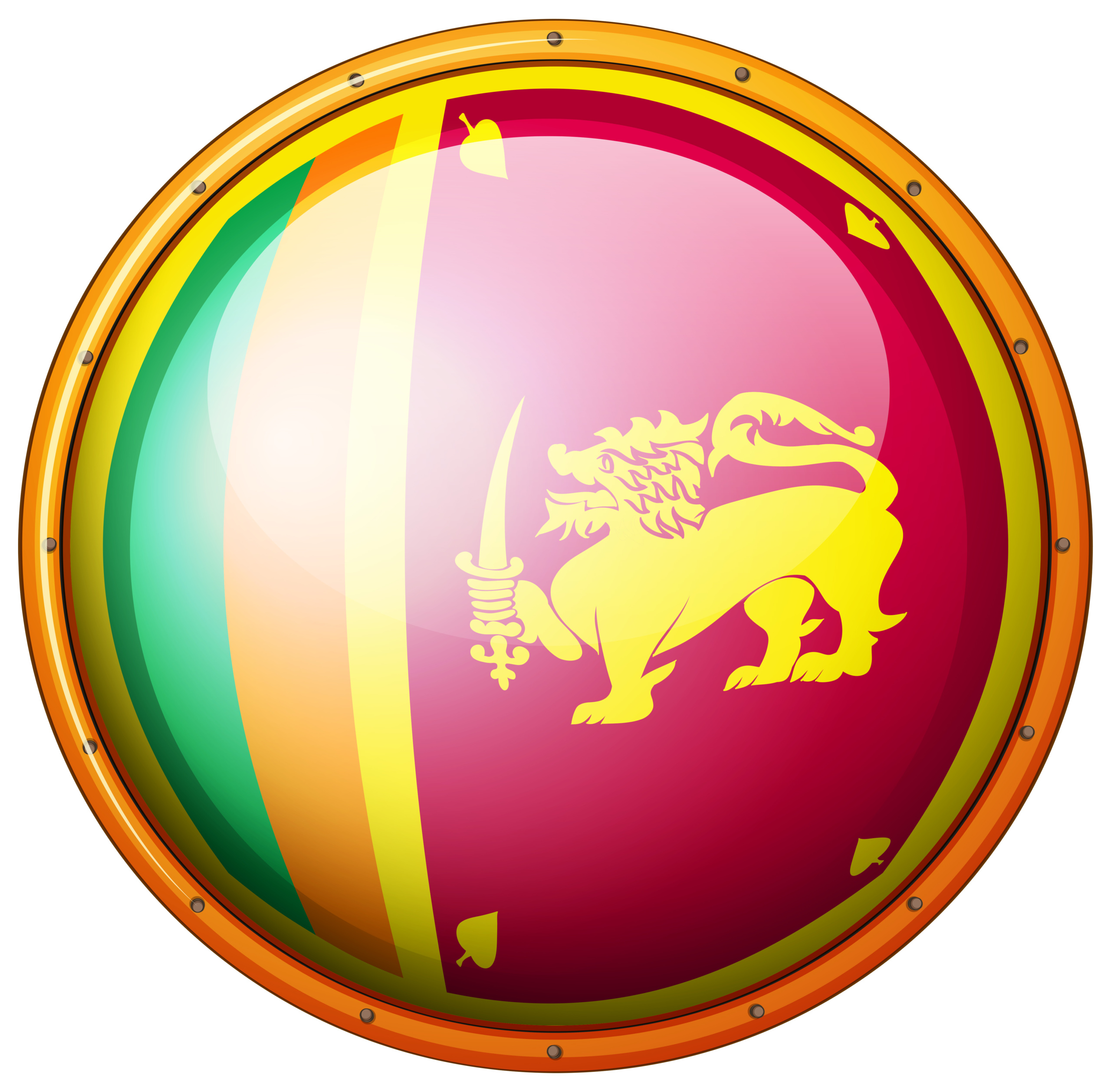“The Lion, the Flag, and the Meaning: Unpacking Sri Lanka’s Iconic National Flag”
Have you ever looked at a national flag and thought, “What on earth does all that mean?” It’s not just a colorful piece of cloth flapping in the wind—it’s a visual story, a symbol of history, culture, and pride. And if there’s one flag that’s packed with rich symbolism and a unique design, it’s the Sri Lankan national flag. A symbol of the island nation’s vibrant heritage, its flag is more than just a decorative element; it’s a conversation starter, a cultural icon, and a visual testament to the diverse history and unity of the country. But, let’s face it, the lion, the colors, and the intricate design might leave even the most well-traveled of us scratching our heads at times.
So, let’s take a deep dive into the story behind Sri Lanka’s flag. Ready for a ride through history, symbolism, and a whole lot of culture? Let’s go!
A Flag That Speaks Volumes: The Sri Lankan National Flag
The national flag of Sri Lanka, officially known as the “Lion Flag,” is one of the most distinctive and colorful flags in the world. Why? Because it’s not just about showing national pride, it’s about telling a story of the country’s rich history, heritage, and religious unity. It’s a flag that practically screams, “We are diverse, we are united!” with every wave.
The Lion: A Symbol of Strength and Courage
First, let’s talk about the lion. This is probably the most noticeable feature on the flag, and it’s what gives the flag its unofficial title—the “Lion Flag.” The lion is positioned in the center of the flag, holding a sword in its right paw. Now, the lion is not just there for decorative purposes—oh no. It’s a mighty symbol of Sri Lanka’s strength, bravery, and the royal heritage that the country has been proud of for centuries. The lion is a direct representation of the Sinhalese people, who make up the majority of Sri Lanka’s population. In fact, the lion’s presence on the flag ties directly to the Kingdom of Lanka’s royal insignia.
But here’s the thing: that sword the lion is holding? It’s not just a random weapon; it symbolizes the country’s resolve to protect its independence and fight for freedom. It’s the “we-don’t-back-down” symbol. You could think of it as Sri Lanka’s very own national flex.
The Colors: A Tapestry of History
Now, let’s talk about the color scheme. Oh, boy. This flag has some serious color power. You’ve got a rich maroon background, with the lion in gold. But wait, there’s more. You’ll notice four golden bo leaves (the leaves of the sacred Bodhi tree) positioned at each corner of the flag. These leaves are no random add-ons. They represent the four main Buddhist virtues: kindness, compassion, equanimity, and sympathetic joy. These are not just ideals but core beliefs that Sri Lanka’s majority Buddhist population holds dear.
But, you might be wondering, what about the green and orange stripes? Well, here’s the deal: those stripes on the side of the flag represent Sri Lanka’s minority Tamil and Muslim communities. Orange represents the Tamil ethnic group, while green represents the Muslim population. These two colors are a nod to the fact that Sri Lanka, despite its majority Sinhalese population, is a proud melting pot of various communities and cultures. It’s like the flag is saying, “We’re different, but we’re in this together.” Kind of poetic, right?
The Flag and Its Evolution
Now that we’ve broken down the basics of the flag, let’s rewind a bit. How did we get here? When did the flag become the symbol it is today? Well, the modern Sri Lankan flag has its roots in the post-colonial period. Before Sri Lanka gained independence from British rule in 1948, the country was under British colonial rule, and like many other nations, it had a colonial flag that didn’t exactly scream “Sri Lanka” at the time.
The flag we know today was first adopted in 1948, when Sri Lanka became independent. But the lion and the Bo leaves were already symbols of the country long before that, used in the Sinhala Kingdom’s flags during the reign of kings. After independence, the flag was officially adopted as a symbol of the nation’s unity and sovereignty, reflecting both its Buddhist heritage and its multi-ethnic makeup.
It’s safe to say, the flag’s evolution represents Sri Lanka’s journey from colonialism to independence, and its desire to maintain a balance between the majority and minority cultures.
What’s Up with the Transparent PNGs and Vector Versions?
Now, let’s take a small detour, because, as we all know, in the digital age, flags aren’t just fluttering around on poles or draped over balconies. Nope, they are everywhere online. The Sri Lankan flag, in all its glorious color, has made its way into the world of graphic design, digital media, and even memes (yes, it’s a thing). You’ve probably come across terms like “Sri Lanka flag PNG” or “Sri Lanka flag transparent PNG,” and you’re probably thinking, “What the heck does all that mean?”
Well, a “PNG” file is a type of image file format that supports transparent backgrounds. So, when you see a “Sri Lanka flag PNG” online, it means you can easily add the flag to any digital project without worrying about that unsightly white or colored background interfering with your design. It’s basically like magic for designers and digital creators. Want to make a social media post or a website design featuring the Sri Lankan flag? Pop a transparent PNG of the flag in there, and voila! It’s seamless, it’s clean, and it’s a breeze to work with. As for vector versions of the flag? They’re just the flag’s design in a format that can be resized without losing quality. So, whether you need it for a banner or a tiny Instagram post, the quality stays sharp.
The Flag as a Cultural Icon
Okay, so now we know the backstory, symbolism, and digital relevance of the Sri Lankan flag. But beyond all the history, why does this flag matter today? Why should we care about a piece of fabric? Here’s the thing: the flag of Sri Lanka isn’t just something you see on government buildings or at official events. It’s a cultural icon. It’s a source of national pride. It’s the symbol that Sri Lankans rally behind, whether they’re cheering for their cricket team or coming together after a natural disaster.
In the Sri Lankan diaspora, you’ll see the flag everywhere—from living rooms in London to offices in Toronto to streets in Melbourne. It represents a connection to home, a reminder of heritage, and a point of pride for millions of Sri Lankans living abroad.
But here’s something to think about: the flag doesn’t just represent Sri Lanka as a nation—it also represents its ongoing journey. From its tumultuous past to its diverse future, the flag stands as a reminder that despite differences, unity is possible. The lion in the center might represent strength, but the four Bo leaves? They remind us that compassion and harmony are just as important.
Wrapping It Up
The Sri Lankan flag is more than just a colorful piece of fabric; it’s a rich tapestry of history, culture, and symbolism. From the fierce lion to the humble Bo leaves, each part of the flag tells a story of a nation proud of its past and hopeful for its future. So, the next time you see the flag, whether it’s waving in the breeze or appearing as a transparent PNG on your screen, remember that it’s not just a flag—it’s a symbol of a nation’s identity, unity, and strength.
And honestly, how many flags can say that?


